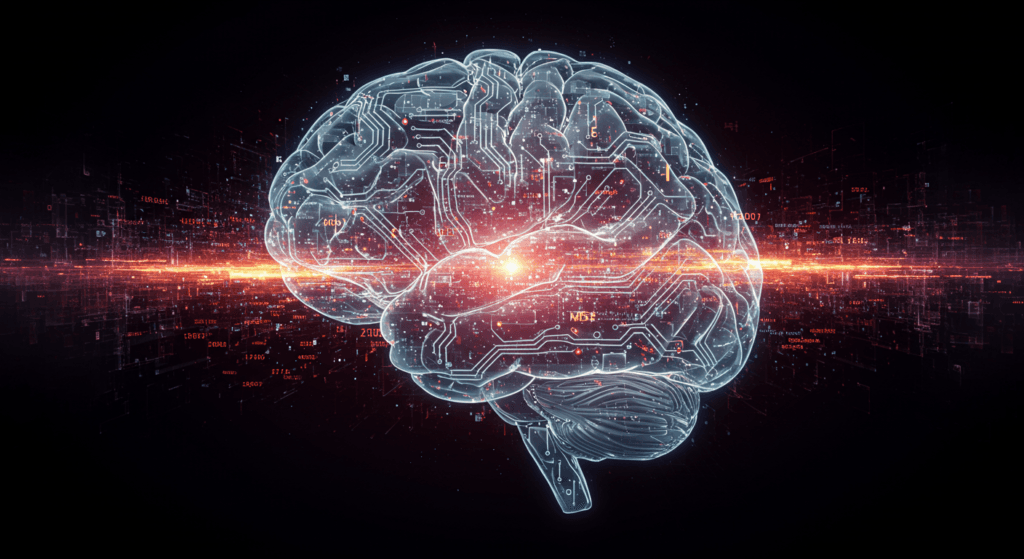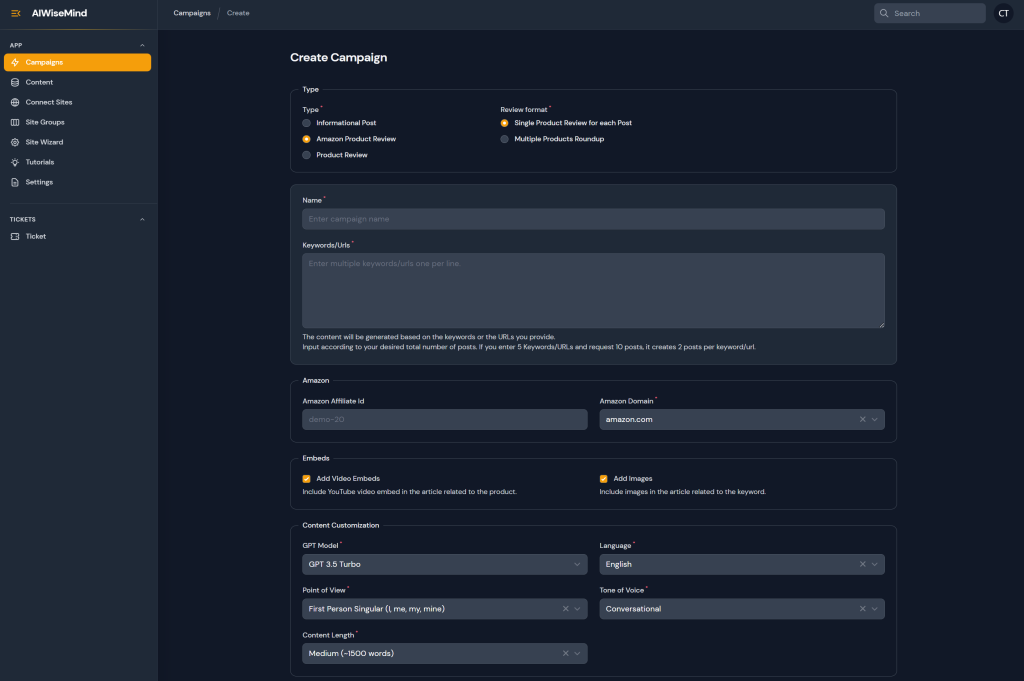Artificial intelligence (AI) is revolutionizing numerous industries, and software development is no exception. AI-powered programming tools and technologies are automating repetitive tasks, enhancing code quality, and transforming how developers approach their work. This article dives deep into AI-powered programming, explaining what it is, the tools and technologies available, the benefits and limitations, ethical considerations, and what the future holds for this exciting field. Whether you’re a beginner coder or a seasoned developer, understanding AI in software development can open new doors for creativity and efficiency.
What is AI-Powered Programming and Development?
AI-powered programming leverages artificial intelligence to assist developers in creating, debugging, and optimizing software. AI can be integrated into various stages of the software development lifecycle, enabling tasks like:
- Code Generation: Writing boilerplate code automatically.
- Bug Detection and Fixing: Identifying and correcting errors.
- Optimization: Suggesting performance improvements.
- Documentation: Generating readable explanations of code behavior.
Developers use programming languages, AI frameworks, and advanced code editors to build AI-driven applications that perform tasks with minimal human intervention. By automating repetitive processes, AI enables developers to focus on creative problem-solving, architectural design, and understanding the broader implications of their software.

Key Tools and Technologies in AI-Powered Programming
AI-Powered IDEs (Integrated Development Environments)
AI-powered IDEs provide advanced features to streamline development. Here are some noteworthy examples:
- Cursor:
- Features: AI code completion, natural language commands, documentation generation, and code refactoring.
- Languages Supported: JavaScript, Python, TypeScript.
- Use Case: Simplifies complex coding tasks with natural language inputs.
- GitHub Copilot:
- Features: Context-aware code suggestions and autocompletion.
- Integration: Works seamlessly with popular IDEs.
- Example: Typing
forin Python prompts a suggested loop structure tailored to your code context.
- Replit:
- Features: Cloud-based environment with real-time AI assistance and collaboration tools.
- Specialization: Supports multi-language coding and is beginner-friendly.
- Example: The Ghostwriter feature explains code snippets in plain language.
- Tabnine:
- Features: AI-driven code completion for over 20 programming languages.
- Integration: Compatible with various IDEs like VS Code and JetBrains.
- Use Case: Increases productivity by suggesting contextually relevant code.
- JetBrains AI:
- Features: Built-in AI assistance in all JetBrains IDEs.
- Benefits: Streamlines debugging, enhances code quality, and accelerates workflows.
Automated Documentation Tools
Examples like Mintlify generate user-friendly documentation directly from code. These tools save developers time and ensure consistency across projects.
AI-Powered Assistants
- Stepsize: Tracks technical debt and suggests improvements.
- Mutable: Offers real-time feedback on code quality and logic.
- AskCodi: Generates code snippets and assists with debugging tasks.
Key AI Technologies in Development
Artificial Intelligence (AI) encompasses a variety of technologies that are transforming software development. Here’s an expanded overview of key AI technologies in this domain:
Machine Learning (ML)
- Definition: A subset of AI that enables systems to learn from data, identify patterns, and make decisions with minimal human intervention.
- Applications in Software Development:
- Predictive Analytics: ML models analyze historical data to forecast future trends, aiding in decision-making processes.
- Automated Code Generation: Tools like OpenAI’s Codex utilize ML to convert natural language descriptions into functional code, streamlining the development process.
- Bug Detection and Resolution: ML algorithms identify anomalies in codebases, suggesting fixes to enhance software reliability.
Natural Language Processing (NLP)
- Definition: A field of AI focused on the interaction between computers and humans through natural language.
- Applications in Software Development:
- Requirement Analysis: NLP tools interpret and translate human language requirements into technical specifications, ensuring accurate implementation.
- Documentation Generation: Automates the creation of comprehensive documentation by summarizing code functionalities in human-readable language.
- Chatbots and Virtual Assistants: Enhance user interaction by providing real-time support and guidance during software usage.
Computer Vision
- Definition: An AI discipline that enables computers to interpret and process visual information from images and videos.
- Applications in Software Development:
- User Interface (UI) Design: Assists in creating intuitive and accessible interfaces by analyzing visual elements and user interactions.
- Automated Testing: Identifies visual discrepancies and layout issues in applications, ensuring consistency across different devices and platforms.
- Image and Video Processing Applications: Facilitates the development of software that requires image recognition, augmented reality, or visual data analysis.
Reinforcement Learning (RL)
- Definition: A type of machine learning where an agent learns to make decisions by performing actions and receiving feedback in the form of rewards or penalties.
- Applications in Software Development:
- Optimization Problems: RL algorithms find optimal solutions in complex scenarios, such as resource allocation and scheduling.
- Personalized User Experiences: Adapts software behavior based on user interactions to enhance engagement and satisfaction.
- Game Development: Designs intelligent agents that learn and adapt, providing challenging and dynamic gameplay experiences.
Generative Adversarial Networks (GANs)
- Definition: A class of AI algorithms where two neural networks, a generator and a discriminator, contest with each other to produce new, synthetic instances of data.
- Applications in Software Development:
- Data Augmentation: Generates synthetic data to train and improve machine learning models, especially when real data is scarce.
- Content Creation: Assists in creating realistic images, music, and other media, enhancing multimedia applications.
- Security Testing: Simulates potential threats to test and strengthen software security measures.
Automated Machine Learning (AutoML)
- Definition: The process of automating the end-to-end process of applying machine learning to real-world problems.
- Applications in Software Development:
- Model Selection and Tuning: Automatically selects the best algorithms and hyperparameters, streamlining the development of efficient models.
- Deployment: Simplifies the integration of machine learning models into software applications, reducing the need for specialized expertise.
- Performance Monitoring: Continuously evaluates model performance, ensuring sustained accuracy and relevance.
These AI technologies are integral to modern software development, enhancing efficiency, accuracy, and innovation across various stages of the development lifecycle.

Benefits of AI-Powered Programming
- Increased Productivity:
- Automates repetitive tasks like boilerplate code writing.
- Allows developers to focus on more creative aspects of software design.
- Improved Code Quality:
- AI tools identify errors and suggest optimizations, leading to more reliable software.
- Enhanced Collaboration:
- Real-time AI suggestions improve team workflows.
- Facilitates effective code reviews and knowledge sharing.
- Reduced Costs:
- Decreases manual testing and debugging time.
- Optimizes resource allocation, making development more cost-effective.
- Empowering Beginners:
- AI simplifies learning curves for novice developers by generating sample code and explaining concepts.
Limitations of AI-Powered Programming
- Lack of Creativity:
- AI relies on existing data patterns and cannot invent novel solutions. While it excels at generating code based on past examples, it struggles with problems that require abstract, innovative thinking or creative approaches to problem-solving.
- Bias and Inaccuracies:
- AI models trained on biased datasets may produce flawed or unfair code suggestions. For instance, training on outdated or limited datasets can lead to outputs that reflect existing prejudices or fail to accommodate diverse needs.
- Example: An AI tool trained primarily on English-language data might struggle with handling multilingual requirements or non-Western coding conventions.
- Security Concerns:
- AI-generated code might introduce vulnerabilities, such as poorly implemented encryption or unsafe handling of user inputs. Additionally, developers relying on AI may inadvertently deploy software with security flaws if they don’t thoroughly review the output.
- Case Study: Researchers have identified instances where AI-generated code included outdated libraries with known vulnerabilities, posing risks to projects using those outputs.
- Over-Reliance:
- Dependence on AI can hinder critical thinking and problem-solving skills. Developers may become overly reliant on AI tools for solutions, which could lead to diminished understanding of fundamental programming principles over time.
- Impact: Teams relying too heavily on AI might struggle when tools fail to address novel or highly specific challenges.
- Maintenance Issues:
- AI-generated code may lack proper documentation, making future modifications challenging. Poorly structured or unclear code can increase technical debt and complicate collaboration among teams.
- Suggestion: Teams should implement rigorous code review processes to ensure AI-generated code meets maintainability standards and includes sufficient documentation.
- Limited Context Awareness:
- While AI tools can assist with specific tasks, they often lack a holistic understanding of complex projects. This limitation can result in outputs that fail to align with the overarching goals or architectural decisions of a project.
- Example: An AI might optimize an individual function for speed but neglect broader trade-offs, such as readability or integration with other components.
- High Resource Consumption:
- Training and deploying AI models can be resource-intensive, requiring significant computational power and energy. This environmental impact is a growing concern, particularly for large-scale projects relying on advanced AI tools.
- Mitigation: Developers and organizations should consider adopting energy-efficient models and leveraging cloud-based solutions to minimize environmental costs.
Ethical Considerations
Ethical considerations in AI-powered programming are vital to ensure responsible and fair use of this transformative technology. Below is an expanded exploration of key ethical challenges:
1. Algorithmic Bias
AI models are only as unbiased as the datasets they are trained on. If training data contains discriminatory patterns or lacks diversity, AI systems may perpetuate or amplify these biases. To address this, organizations can adopt mitigation strategies that combine examples and proactive measures:
- Challenges and Examples:
- AI-powered hiring tools may unintentionally favor certain demographics due to biased historical data.
- Code generation tools could reinforce insecure practices if such patterns exist in their training datasets.
- Integrated Mitigation Strategies:
- Curating diverse and representative datasets to minimize bias.
- Regular audits and validation processes to detect and rectify biased outputs.
- Incorporating feedback loops where users report unintended biases for continuous improvement.

2. Intellectual Property and Ownership
The rise of AI-generated code brings questions about intellectual property rights.
- Key Questions:
- Who owns the rights to code written by AI?
- Can AI-generated work be patented or copyrighted?
- Case Studies and Examples:
- In 2021, GitHub Copilot, an AI-powered code completion tool, sparked debates about whether code snippets it generated from training data infringed on copyright laws. This raised questions about ownership and originality.
- The European Union has proposed AI Act frameworks, which include provisions addressing intellectual property for AI outputs, aiming to clarify legal responsibilities.
- Potential Solutions:
- Establishing clear legal frameworks that balance ownership rights between AI creators and users, such as defining the role of human input in determining ownership.
- Transparency in documenting AI contributions to ensure accountability, such as tracking the origin of AI-generated code and differentiating it from human-written components.
3. Data Privacy and Security
AI-powered tools often process sensitive user data to provide tailored suggestions, raising concerns about data protection.
- Challenges:
- Unauthorized access to sensitive information during training or deployment.
- Data breaches exposing proprietary or personal data.
- Recommendations:
- Implementing robust encryption for both data in transit and at rest to prevent unauthorized access.
- Utilizing secure APIs and authentication protocols to manage data access rights.
- Regularly updating and patching systems to mitigate vulnerabilities that could lead to data breaches.
- Ensuring compliance with privacy regulations like GDPR and CCPA by embedding privacy-by-design principles in AI tools.
- Providing users with transparency features, such as logs detailing how their data is used, and options to manage consent.
4. Job Displacement and Workforce Transition
While AI tools enhance productivity, they may also reduce demand for certain developer roles.
- Impacts:
- Entry-level coding jobs may decline as AI automates simpler tasks.
- Demand for AI-savvy roles will increase, requiring workforce upskilling.
- Ethical Response:
- Encouraging continuous learning programs, such as coding bootcamps and online AI courses, to help workers adapt.
- Companies like Google and Microsoft are investing in reskilling initiatives aimed at training developers to use AI effectively.
- Partnering with educational institutions to integrate AI and automation training into existing curriculums.
- Developing AI systems as collaborative tools that augment human efforts rather than replace them, ensuring developers continue to play a critical role in the software lifecycle.
5. Transparency and Explainability
Understanding how AI tools make decisions is crucial for trust and accountability.
- Challenges:
- AI systems often function as “black boxes,” making their decision-making processes opaque. For example, an AI-based credit scoring system might reject a loan application without offering a clear explanation, leading to frustration and potential biases in financial decisions.
- Lack of transparency can lead to misinformed usage or ethical oversights.
- Solutions:
- Building explainable AI (XAI) systems that provide clear rationales for their outputs. For instance, an XAI tool might display the specific factors influencing a loan decision, such as income level, credit history, or payment consistency, enabling users to understand and contest the outcome if necessary.
- Educating developers on the limitations and proper use of AI tools to ensure they can interpret and validate AI-generated outputs effectively.
6. Ethical AI Governance
The broader societal implications of AI development call for robust ethical frameworks.
Collaboration between governments, industry leaders, and academia to create enforceable standards.
Areas of Focus:
Fairness: Ensuring equitable access to AI technologies.
Accountability: Holding developers and companies responsible for misuse.
Sustainability: Considering environmental impacts of training large-scale AI models.
Actionable Steps:
Industry-wide adoption of ethical guidelines.
Conclusion
AI-powered programming is rapidly transforming the software development landscape, offering significant advantages in productivity, code quality, and cost reduction. By automating repetitive tasks and providing intelligent assistance, AI tools empower developers to focus on higher-level design and problem-solving. From AI-powered IDEs like GitHub Copilot and Tabnine to automated documentation generators and specialized AI assistants, the ecosystem of tools and technologies is constantly evolving. Key AI technologies like machine learning, NLP, and computer vision are driving innovation in code generation, bug detection, and user interface design.
However, the integration of AI in programming is not without its challenges. Limitations such as the lack of true creativity, potential for bias and inaccuracies, security concerns, and the risk of over-reliance must be carefully addressed. Ethical considerations surrounding algorithmic bias, intellectual property, data privacy, job displacement, transparency, and the need for robust ethical governance are paramount.
The future of AI-powered programming lies in striking a balance between leveraging its potential and mitigating its risks. This requires a multi-faceted approach involving:
- Continuous Improvement of AI Models: Refining training datasets to minimize bias and improve accuracy, focusing on explainability and transparency in AI decision-making.
- Emphasis on Human Oversight: Maintaining human involvement in the development process to ensure code quality, address complex problems, and uphold ethical standards.
- Development of Ethical Frameworks: Establishing clear guidelines and regulations to govern the development and deployment of AI in software development, addressing issues of accountability, fairness, and data privacy.
- Focus on Education and Training: Equipping developers with the skills and knowledge necessary to effectively utilize AI tools and navigate the evolving landscape of software development.
By embracing a responsible and proactive approach, the software development community can harness the transformative power of AI to create more efficient, reliable, and innovative software solutions while safeguarding against potential pitfalls. The future is not about replacing human developers with AI, but rather about augmenting their abilities and fostering a new era of collaborative, intelligent software creation.


